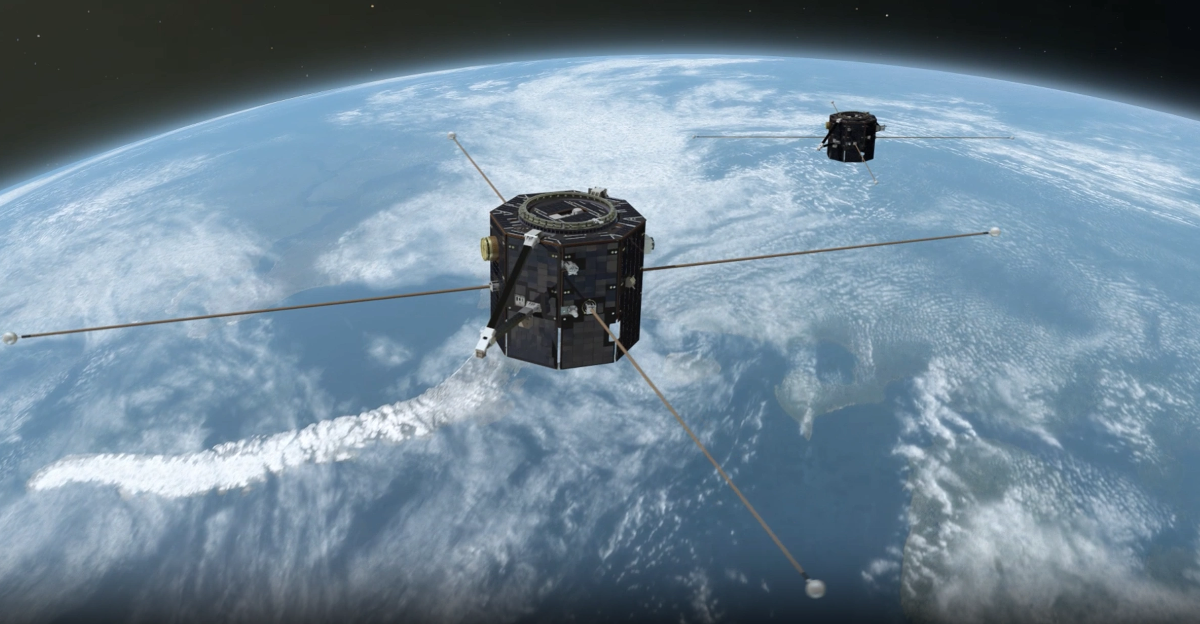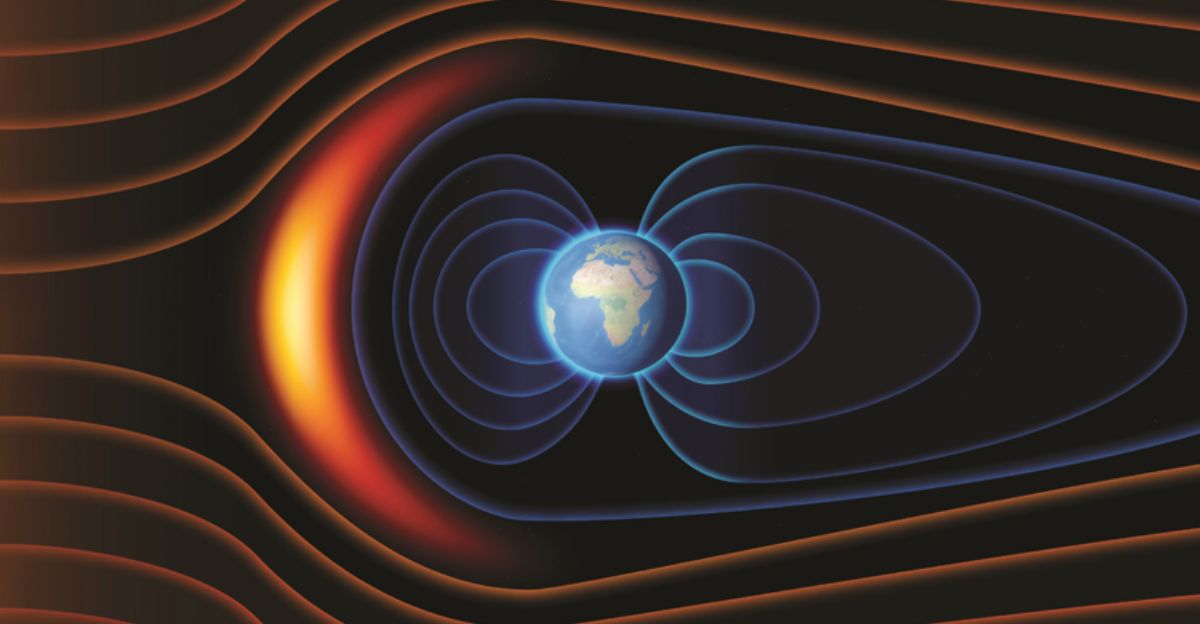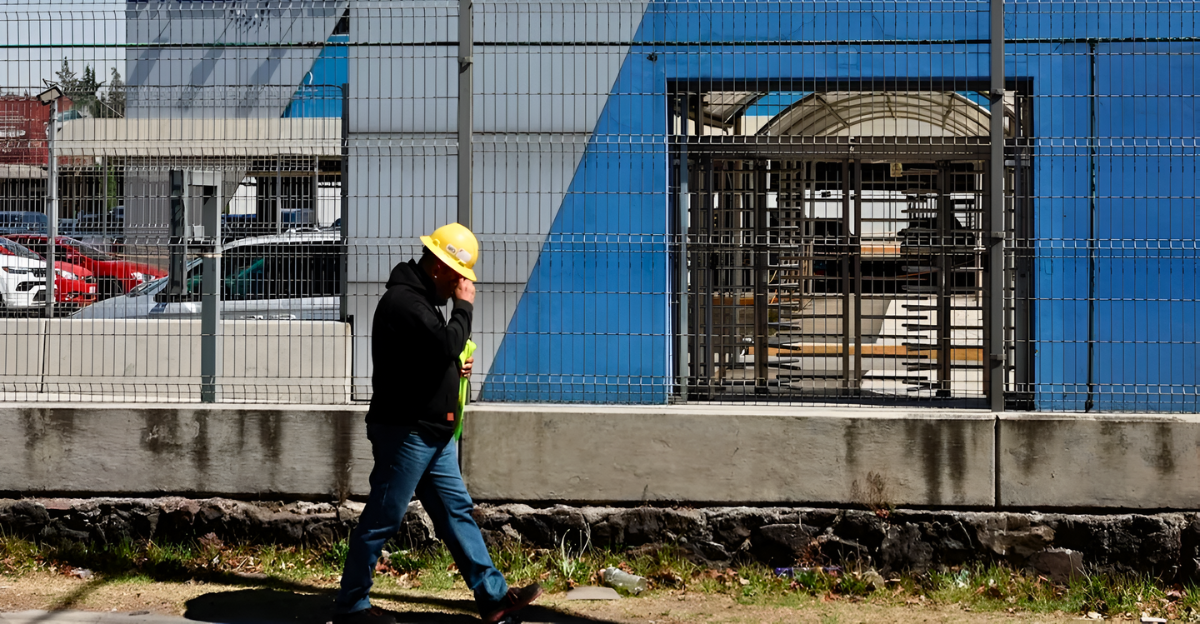
In recent years, our understanding of space weather has taken center stage, driven by an increasing reliance on technology. As solar activity escalates, the impact of powerful solar storms becomes clear, disrupting satellites, navigation systems, and even power grids. These storms highlight the importance of Earth’s magnetosphere, a natural shield that protects our planet from harmful solar radiation.
As NASA dives deeper into the complexities of this invisible force field, it is evident that safeguarding life on Earth means understanding the dynamic interactions that occur in space. With the stakes rising, the need for robust strategies to mitigate solar threats is more urgent than ever.
Space Weather Warnings

Solar storms have transitioned from theoretical risks to pressing realities. A notable incident occurred in March 2024 when a geomagnetic storm temporarily caused navigation satellites to lose signal. This disruption unveiled vulnerabilities in our technological infrastructure. It prompted a wake-up call from the U.S. National Oceanic and Atmospheric Administration (NOAA), which has projected increased solar flare activity through 2026.
Such warnings resonate with many sectors, especially those that depend heavily on space-based technology for day-to-day operations. The growing frequency and intensity of solar events emphasize the necessity for comprehensive strategies from NASA and other agencies to protect satellites, astronauts, and crucial technological systems.
Understanding the Magnetosphere

The Earth’s magnetosphere serves as a vast shield against energetic particles emitted by the sun. Since the onset of the space age, scientists have dedicated themselves to studying it, launching missions like Explorer 1 and THEMIS. Yet, many key phenomena associated with this protective barrier remain poorly understood, particularly magnetic reconnection moments when magnetic lines snap and realign with explosive energy release.
Understanding these phenomena is essential for protecting technology and understanding space weather’s broader implications. The scientific community recognizes that decoding the magnetosphere is a top priority, especially as mismanagement of these forces could lead to catastrophic failures in various infrastructure systems.
The Challenge of Observing Magnetic Reconnection

Directly observing boundary events within the magnetosphere has remained a formidable challenge for researchers. These fleeting phenomena occur in extreme conditions near the poles, eluding the grasp of previous missions that captured either limited snapshots or confined regions. The stakes for understanding these boundary interactions climb as dependence on satellite systems grows.
With increasing energy demands and the proliferation of commercial satellites, the ability to effectively monitor and mitigate the impacts of solar storms could mean the difference between operational success and catastrophic failure. NASA’s approach to this problem involves innovative technology and strategic planning to probe these elusive events more closely.
The TRACERS Mission Unfolds

On July 23, 2025, NASA’s Tandem Reconnection and Cusp Electrodynamics Reconnaissance Satellites (TRACERS) launched, marking a groundbreaking step in our quest to understand the magnetosphere. This mission is unique as it involves two nearly identical spacecraft flying mere seconds apart through the polar cusp, Earth’s magnetic gateway.
Equipped with advanced sensors, both satellites will gather rich data on electric and magnetic fields while counting charged particles, generating over 3,000 scientific observations in their inaugural year. Dr. Craig Kletzing, the principal investigator for TRACERS, expressed enthusiasm about the potential discoveries. “I get excited thinking about what we’ll finally see,” highlighting the scientific community’s excitement and anticipation.
Mapping Solar Energy Impacts

TRACERS’ orbital path navigates through the high-latitude “cusp,” a weak area in Earth’s magnetosphere near the North Pole. This region is strategically chosen due to the ease with which solar particles can penetrate the magnetosphere, leading to visible auroras and potential disruptions in communications and power systems.
The stakes for millions living under the auroral oval are particularly high; they have experienced increased geomagnetic-induced blackouts and GPS anomalies. The satellites’ ability to map how solar energy affects vital services will play a crucial role in safeguarding communication links and power reliability, protecting individuals from disruptions in their daily lives.
Voices from the Ground

The impact of solar and geomagnetic events reaches far beyond researchers in lab coats; it resonates with everyday people. A Canadian grid engineer, Jean Beaudry, noted, “The better we understand the dynamics up there, the better we can forecast and prepare.” This sentiment echoes throughout various sectors reliant on stable energy and communication systems.
The work of TRACERS is not just scientific inquiry; it’s about facilitating better preparation and resilience in the face of natural disruptions. The hope is that these insights will lead to improved methods for energy management and more reliable technological infrastructures.
The Global Race for Understanding Space Weather

The United States is not alone in its quest to decode the complexities of space weather. The European Space Agency and China are actively developing their missions targeting the magnetosphere and solar storm phenomena in the coming years. Concurrently, firms like SpaceX have been forced to innovate their satellite constellations following significant losses due to extreme space weather events in 2022.
Governments across continents recognize the urgency of enhancing protective strategies for national infrastructure, fostering a spirit of collaboration and healthy competition in space science.
Economic Implications of Solar Events

As our world becomes increasingly interconnected and reliant on technology, economic analysts are raising alarms about the implications of extreme space weather. A recent report by Lloyd’s of London estimated that the potential financial losses on a global scale from a severe solar event could reach as high as $2 trillion.
This stark statistic underscores the far-reaching consequences of disruptive solar storms. Additionally, U.S. Space Force commanders have warned that adversaries could exploit geomagnetic chaos for cyber or military advantage. This real-world impact drives home the necessity for improved forecasting and protective measures in the face of natural cosmic phenomena.
Human Resilience and Innovation

The resilience and ingenuity of humanity mirror the urgency of addressing solar storm risks. As individuals and industries grapple with increasing space weather challenges, they forge new paths forward. For example, a farmer relying on GPS technology for precision agriculture shared, “When satellites fail, our ability to work efficiently falters.
We need solutions to ensure we can keep farming sustainably.” This perspective reveals that the implications of space weather reach deep into sectors that may not initially seem affected. Such voices amplify the call for robust strategies that bridge science and everyday life.
Preparing for the Future

As the TRACERS mission unfolds, its findings promise to shape the future of how we approach solar storm preparedness. Understanding the intricacies of magnetic reconnection will empower scientists and engineers alike to design systems that not only withstand but anticipate disruptions.
The path forward intertwines scientific inquiry with practical applications, ensuring technologies evolve alongside the natural forces that impact them. Overcoming challenges posed by space weather will require continuous collaboration across nations, sectors, and disciplines and a commitment to investing in new technologies that can safeguard our way of life.
Legislative and Policy Changes

In light of rising space weather risks, governments are taking action to revisit protective measures designed for national infrastructure. Legislative bodies are engaging with scientists and industry leaders to craft policies to fortify satellite networks and improve power grid resilience.
States across multiple continents are forming collaborative efforts, pooling resources, and sharing data to enhance predictive capabilities. Such policy shifts reflect the growing consensus: the cost of inaction is far greater than the investment required to protect critical systems. Policymakers understand that integrating scientific research with decision-making is key to fostering a secure technological future.
The Importance of Public Awareness

As advancements in space science continue, raising public awareness about the potential impacts of solar storms becomes paramount. Educating communities about the realities of space weather can empower them to engage in proactive measures that protect their daily lives and livelihoods.
Schools, organizations, and local governments can play pivotal roles in disseminating information and fostering preparedness. A farmer sums it up succinctly: “We can’t afford to ignore what’s happening in space; it has consequences here at home.” By anchoring solar storm discussions within communities, we create a more resilient society poised to adapt to future challenges.
The Legacy of TRACERS

The TRACERS mission stands as a beacon for future space-weather research endeavors. It signifies a collective movement toward understanding the forces that govern our planet’s vulnerability to solar storms. As data flows from the twin satellites, the scientific community anticipates myriad breakthroughs that could redefine navigation, communication, and energy management.
The legacy of TRACERS may be more than just scientific discoveries; it could empower generations to approach technological development with a renewed regard for the cosmic environment. These insights will shape how we coexist with the intricate forces in the universe.
Embracing the Cosmic Challenge

In conclusion, the journey to decode the mysteries of the magnetosphere is ongoing, filled with challenges and curiosities. As NASA’s TRACERS mission unfurls its findings, the broader implications for society and our technological future will become increasingly evident.
Rising economic risks and historical challenges underscore the importance of proactive, collaborative strategies to manage solar storm threats. By embracing the cosmic challenge and fostering public engagement and policy support, we can pave the way for a safer, more resilient future, ensuring we are prepared for whatever the universe may throw our way.






